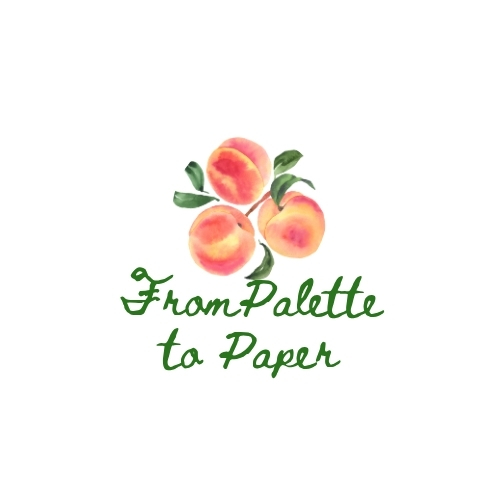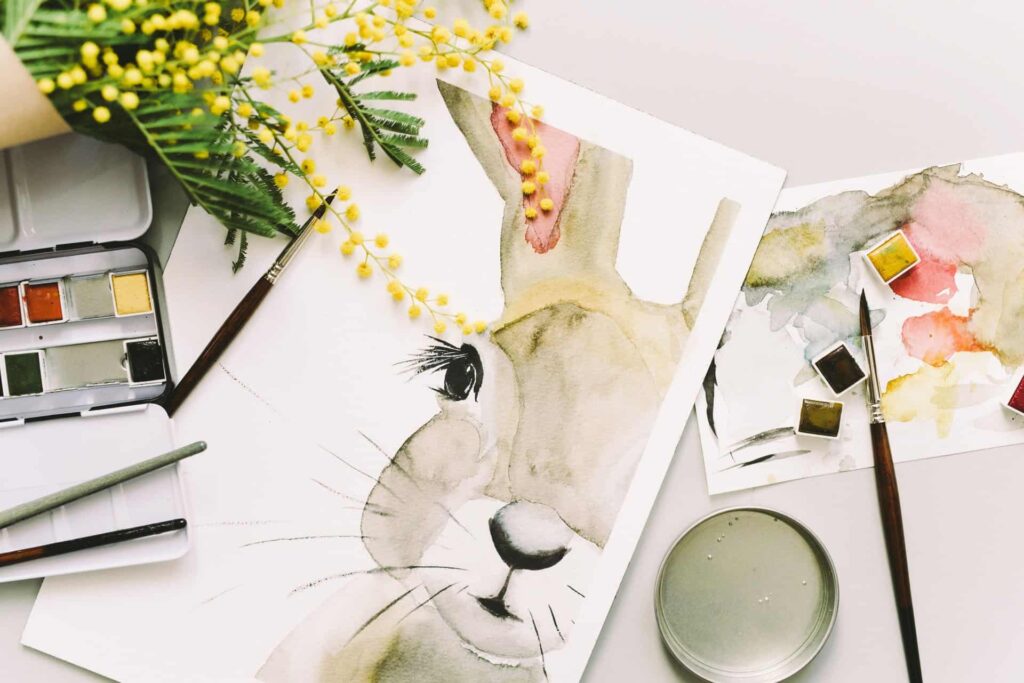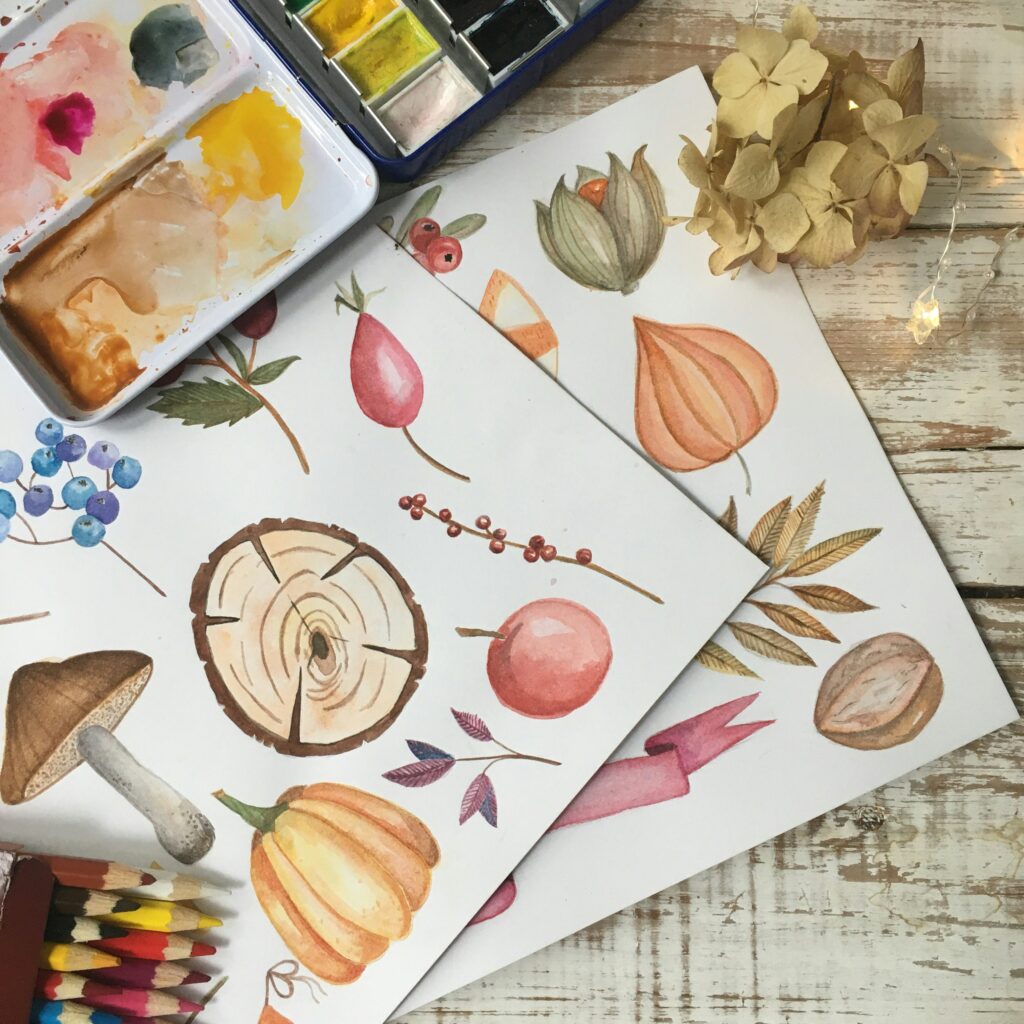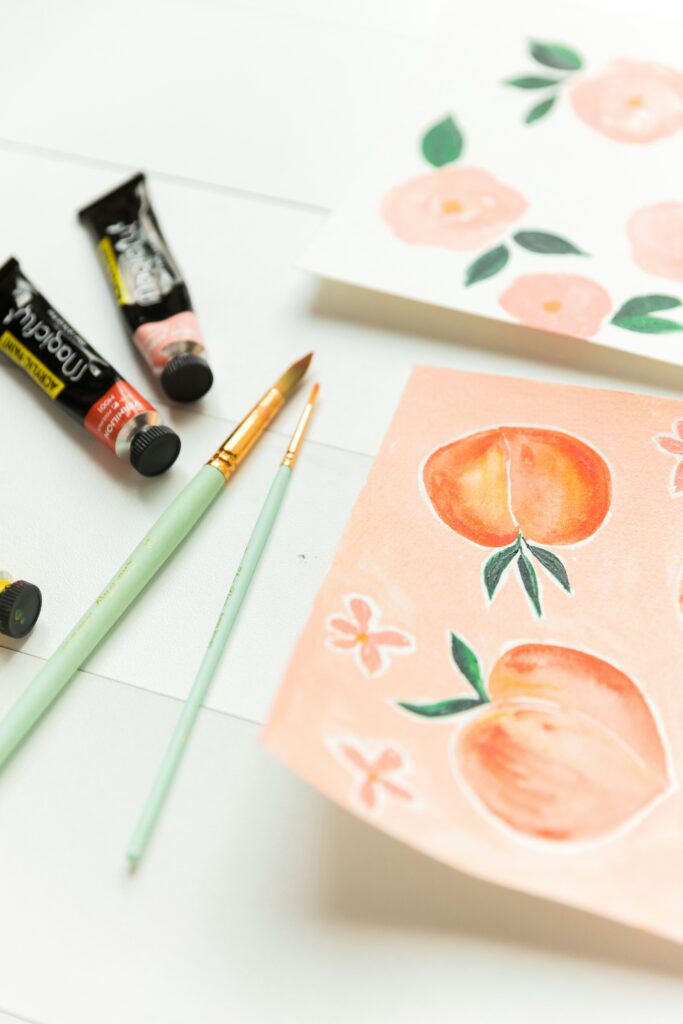
When it comes to choosing the best watercolor brushes, there are a lot of opinions and information out there to sift through. Someone who enjoys doing larger projects might need a large mop brush, but what it you like painting miniatures and need a detail brush? It’s important to take this into account when considering which watercolor brushes to purchase and why.
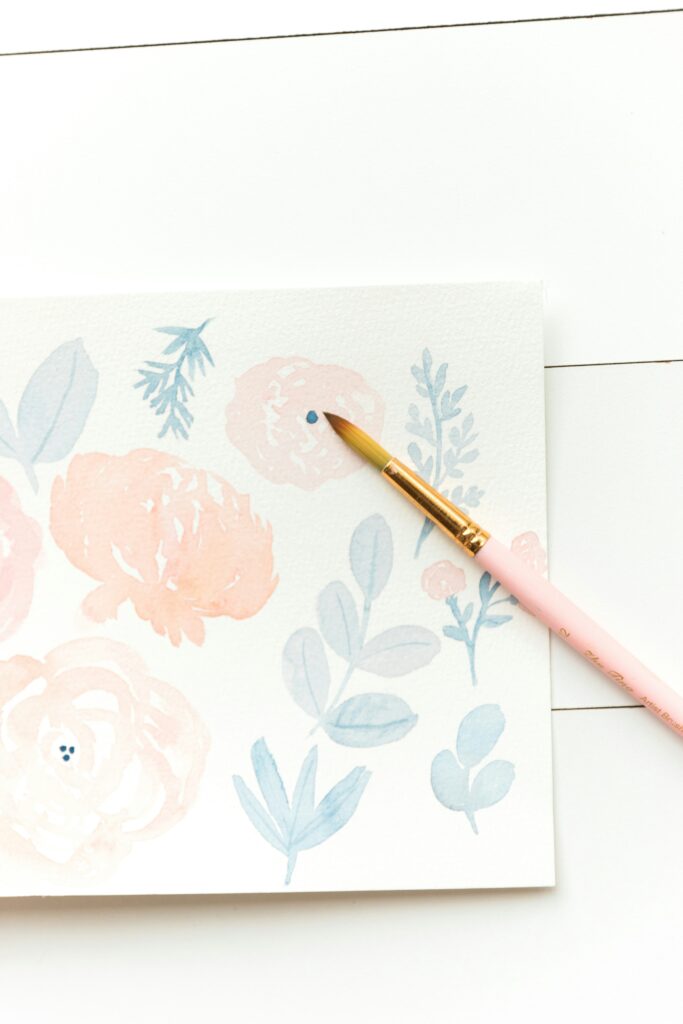
Types of Watercolor Brushes
Angular
The angular brush usually comes in two distinct shapes: the flat angular brush and the dagger brush. For this purpose, we’ll talk about the flat angular brush. This brush allows for good coverage when it comes to painting watercolor paper or canvas, as it allows you to get in hard-to-fill areas, This is especially great if you like to do your backgrounds last.
Dagger
The dagger brush is like a filbert brush with an angle on it. Use these in loose and freehand watercolor paints, like florals, as manipulating the angle of the brush can give you a variety of lines from thick to thin.
Details
Detail brushes are small, and as you guessed it, used for details. I personally think detail brushes are anything below a size 2, while many say a 4. These range in size from 20/0 to 5/0. The larger the number, the smaller the brush. For beginners, anything smaller than a 3/0 is going to be difficult to work with as fewer bristles means less water and pigment to pick up.
Fan
Fan brushes have a wide fan-shaped bristles. They create great texture, such as in landscape paintings with grass and botanicals.
Filbert/Cat Tongue
Filbert/cat tongue brushes look like a round brush but are flat. These are very versatile because you get the benefits of a round brush and a flat brush all in one. These are great for thinner lines without using a liner or script brush.
Flat
Flat brushes are blunt on the end and can be great for washes. Their flat edge can always be nice for detail work in smaller sizes. I prefer flat brushes for creating lines of color that need to be thicker and more squared off than doing so with a round brush.
Mop
Mop brushes are wash brushes. You may hear artists talk about mop brushes being one of the best watercolor brushes because for washes because their soft bristles and wide head allow paint and water to be spread quickly and evenly. Learning water control with these can be tricky and are best used for larger-scale project that require washes or wet-on-wet techniques.
Rake
Rake brushes look similar to a flat brush, but with sections cut out. You can easily make your own rake brushes by using a small pair of scissors and a flat brush. These are great for texture and details without using a detail brush. For example, these are best used on paintings of animals as they’re excellent for realistic texture in fur.
Rigger
Rigger brushes look like liner brushes with long, thin bristles. Create details with these, like tree branches and texture by holding the brush at the very tip of the handle for best results. Rigger brushes and liner brushes look very similar and are often marketed under the same words.
Round
Round brushes have rounded bristles and can be short or long in length. These are the the brushes that I recommend every watercolor beginner start with. These are the most versatile and easily-accessible brushes available, and I would even argue, the only watercolor brushes you really need. Because of their rounded bristles, you can use these for line work, detail work (detail brushes are round), and even large washes dependent upon the size you have.
Liner
Liner brushes have longer hairs designed to create thin lines. Very similar to rigger brushes, these are great for fine detail work and creating those squiggly lines like rigger brushes. For example, I like using these on large floral projects to create contrast and detail inside flower heads.
Want to see the brushes in action? Check out this video:
Want a FREe watercolor for beginners guide?
Subscribe to get this freebie in your inbox! It gives you everything you need to get started in watercolor, including recommendations on supplies and tutorials so can you get painting!
Bristles
There are two types of bristles when it comes to watercolor brushes: natural hair and synthetic hair.
Natural Hair
You might hear some say that natural hair brushes are the best watercolor brushes to purchase for their ability to absorb water and because they usually keep well over time with proper care. They’re also more expensive on average than synthetic brushes, but are generally much higher quality. Natural hair brushes are made from a variety of animal hairs including ox, boar, squirrel, and sable, for example. Kolinsky sable is the most expensive.
Synthetic
In this modern world, synthetic hair brushes are more affordable and more accessible to beginners. They perform very similar to natural hair brushes with very little difference. The most common synthetic bristles used in brushes is Taklon. This fiber is often golden, but can also be brown or white. These brushes tend to be firmer and hold their shape better over time. Although you may be inclined to disregard these because you hear the word synthetic, please don’t! As long as you find quality brush brands, these are an excellent choice to begin your watercolor painting journey.
I own both Kolinky sable hair brushes and synthetic brushes and find myself personally reaching for my synthetic brushes more. When you’re starting out, there may be a desire to get the very best and assume more expensive means better, however, synthetic brushes are a worthy competitor.
Find the key takeaways below:
Natural Hair
- softer
- holds water better naturally because of the scales found in natural hair
- more expensive with Kolinsky Sable being the most expensive. Usually these can only be found at specialty art stores
Synthetic
- firmer
- doesn’t hold water as well
- cheaper and more easily accessible
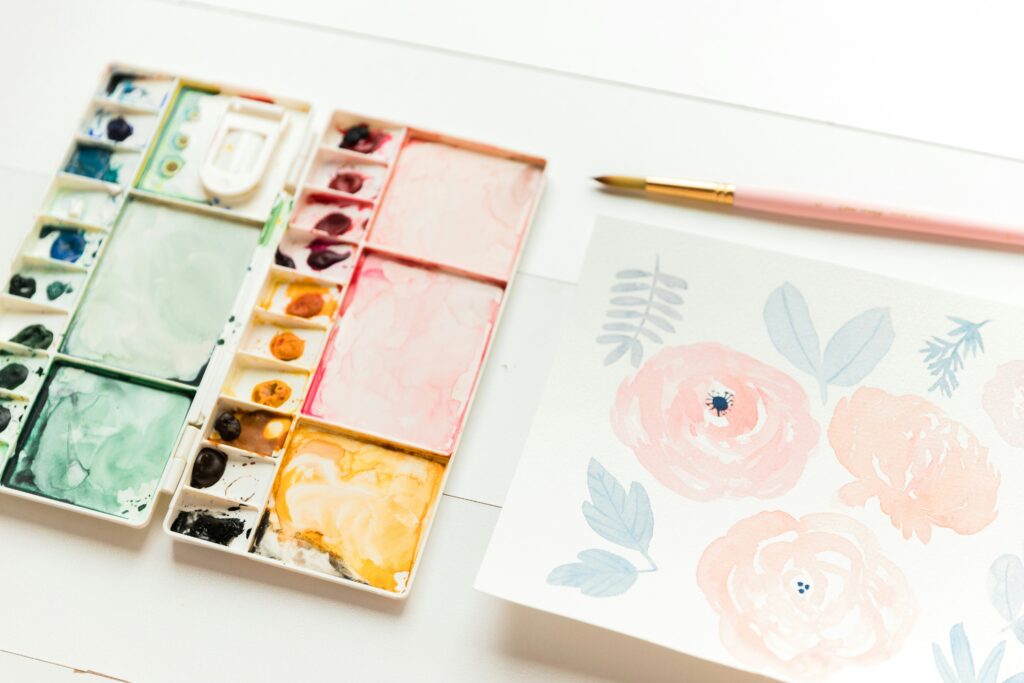
So how do you choose?
When considering the best watercolor brushes to buy there are a few things to keep in mind:
- What will you be using it for?
- What kind of watercolor painting do you want to do?
- What’s your budget?
This is important because all of these factors will affect the type of brush, the bristle content, and the cost. If you’re simply looking to explore watercolor painting for the first time or even to reignite an old passion, I would stick to synthetic round brushes as these are affordable, come in a variety of sizes, and are the most versatile.
Because budget is often the most important factor for many, keep this at the forefront of your mind when choosing.
Next, keep in mind the types of paintings you’d like to achieve. If you want to achieve detail work like Jane Carkill (see The Best Watercolor Books for Beginners), you will need smaller brushes like a size 4, 0, and 3/0, and may have no need for larger brushes sizes 6 and above. If you want to explore looser, freehand botanical work then brushes in size 0, 2, 4, and 8, for example, might be better suited for you.
However, if you’re at the exploration stage and don’t know what you like yet until you try it, a good rule of thumb is to get a brush within the smaller range (2-4), medium range (6-8), and a large range (10-12). Start with 3-4 round brushes, one in each size range, and you’ll be able to achieve a wide range of variety of strokes and techniques to complete a watercolor painting from start to finish.
See The Best Watercolor Tutorials for Beginners for ideas on what to paint.
Need more inspiration? Check out these articles.
Subscribe to get the latest content!
By signing up you’ll also get a FREE Watercolor for Beginners guide. It has everything you need to get started!
